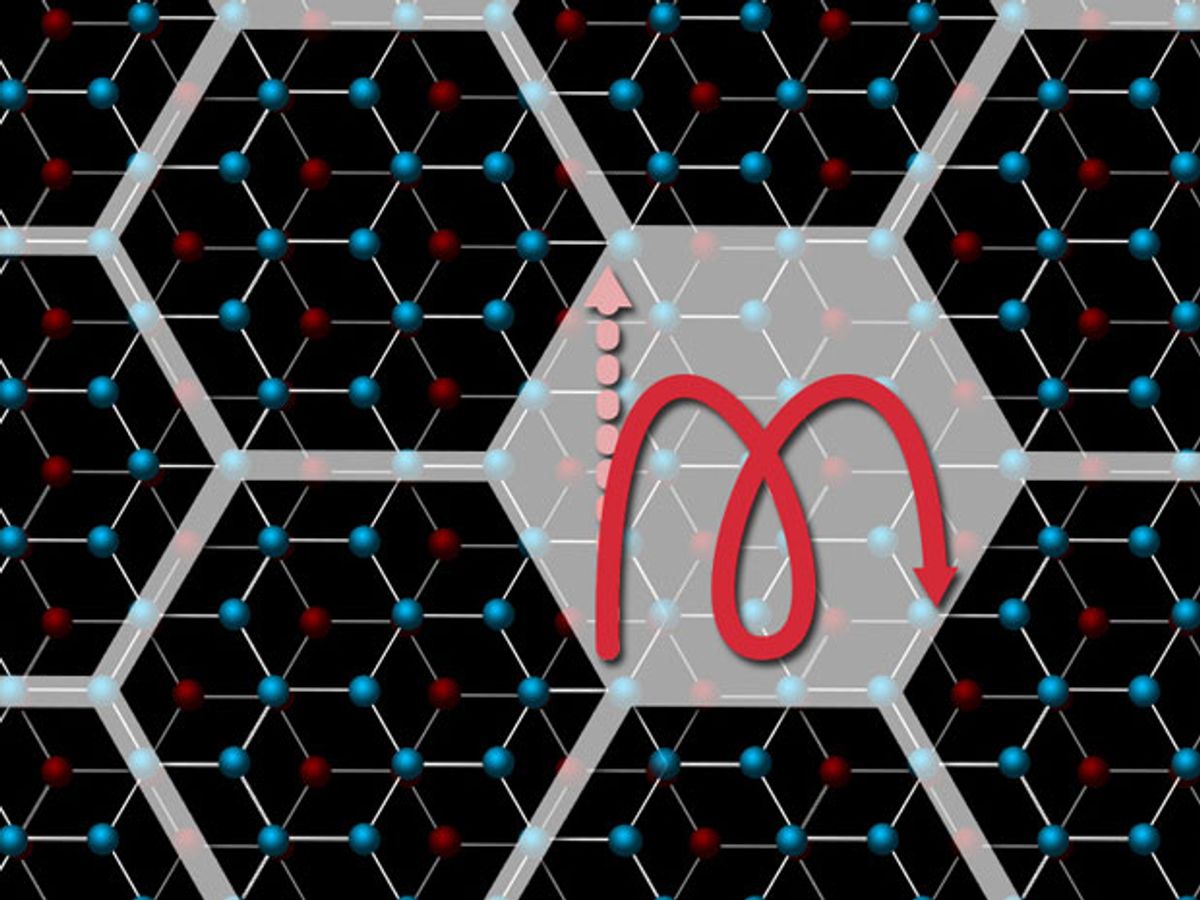Electrons are like people – they follow the path of least resistance. In a conductive material, this means running in the same direction as the electric field.
But like people, electrons sometimes ignore the rules. Physicists from MIT and the University of Manchester have developed a new graphene-based material in which electrons move at controllable angles. The research could spawn new types of energy efficient transistors and have huge implications for how electronics are developed, they claim.
Graphene is a remarkably strong electrical conductor, and has been the cornerstone of many kinds of technology research. In a new discovery, reported in last week’s issue of Science, scientists placed graphene on top of boron nitride (sometimes called “white graphene") and created a superlattice—a structure made of aligned, alternating layers of different nanomaterials. That superlattice, they soon found, is capable of moving electrons perpendicular to the electric field.
(Engineers have long been able to make electrons scoot sideways under the influence of a magnetic field—what’s known as the Hall effect)—but this new trick in graphene didn’t need such a field and operates under a completely different principle.)
Electrons that flow through the material acquire "a built-in vorticity due to the superlattice’s band structure. It places a spin on each electron to nudge it in a new direction," says Leonid Levitov, a physics professor at MIT. The exact angle of the current can be controlled by an electric field.
Furthermore, when the angle of current was nudged enough, the researchers observed two different streams of electrons flowing in opposite directions through the graphene superlattice, canceling out electric charges to produce a neutral current. Levitov and his colleagues noticed that this charge-less current requires only a small amount of voltage—140 millivolts—to be turned on and off, and believe this might make the graphene superlattice material suitable to use in developing energy efficient transistors. “The material is not a transistor yet,” says Levitov, “but it is enormously sensitive to gate-voltage, which is how a transistor operates. It’s very promising.” Levitov emphasized that an optimized form of the material should require even less voltage to turn the current on.
Beyond new transistors, the research is also groundbreaking in a way that's less immediate but could have larger implications. Electrons in graphene generally behave like massless particles. In the graphene superlattices however, the electrons behave as though they have acquired mass, similar to neutrinos. (Neutrinos are neutral, nearly massless particles that are found everywhere but hardly ever interact with most kinds of matter.) This observed effect has no analog in particle physics, and the researchers hope that further research will help contribute to our understanding of the universe.
In a press release, Manchester professor Andre Geim, said: “It is very rare to come across a phenomenon that bridges materials science, particle physics, relativity, and topology.” Perhaps he senses a second Nobel Prize?
This post was corrected on 22 September 2014.



